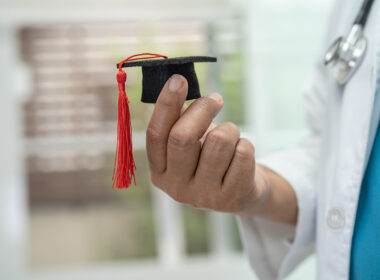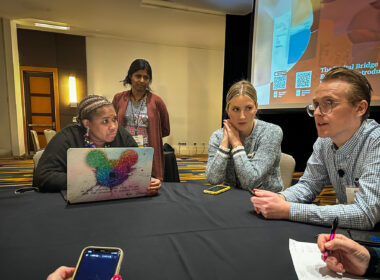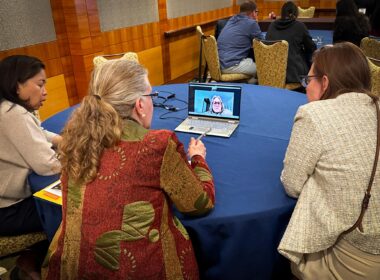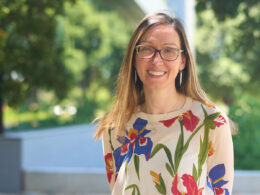Takeaways from the AIM Lab’s SEA Workshop
November 2, 2023
By Larry Chu, MD
An Electric Atmosphere
The chatty hubbub filling the room at the Society for Education in Anesthesiology’s 2023 Annual Meeting was not just idle chatter – it was anesthesia educators buzzing with excitement about the potential of ChatGPT to transform teaching and learning. The jam-packed interactive workshop led by Stanford’s Anesthesia Informatics and Media Lab on November 2nd had participants laser-focused on this hot new AI tool, eager to harness its power to bridge artificial and human intelligence for the future of anesthesiology education.
ChatGPT is like a teenaged love – infatuating and full of potential, but requiring thoughtful guidance.
Janak Chandrasoma, MD
From insightful talks unpacking ChatGPT’s inner workings to hands-on small groups strategizing real-world applications, attendees dove headfirst into exploring how to integrate this emerging technology into innovative workflows at their home institutions. The energetic atmosphere was electric with the promise of equipping anesthesiology educators nationwide with the digital literacy and critical perspectives to guide the next generation.
Unpacking ChatGPT’s Potential
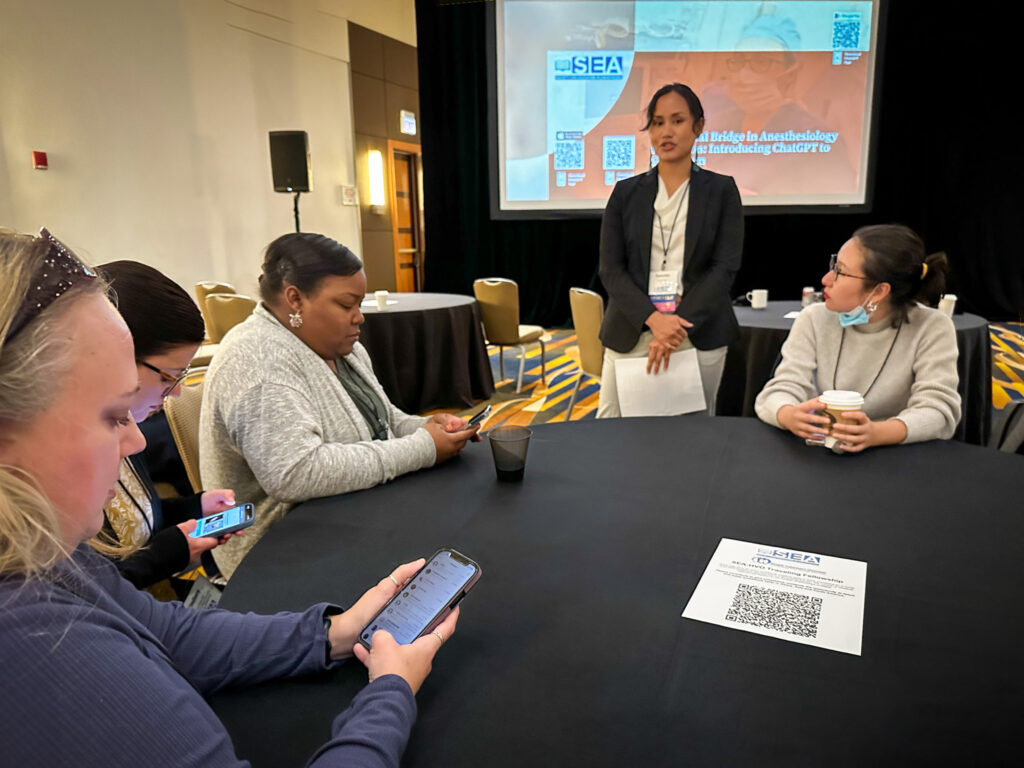
The session kicked off with an eye-opening word cloud activity led by OHSU medical student Tomoko Wilson, which revealed participants’ interest in understanding ChatGPT’s capabilities and limitations specifically for anesthesia education.
Dr. Janak Chandrasoma then motivated the workshop with an insightful talk, comparing ChatGPT to past technologies like mixed tapes. His analogies underscored that while new technologies make processes easier, we shouldn’t cling to old difficult ways out of nostalgia. As Dr. Chandrasoma noted, “Rather, we should thoughtfully integrate tools like ChatGPT to enhance learning.”
2023-24 Stanford AIM Lab Informatics fellow, Alex Goodell, MD, gave a foundations overview explaining how ChatGPT works through machine learning, priming participants for hands-on exploration.
Strategizing Real-World Applications
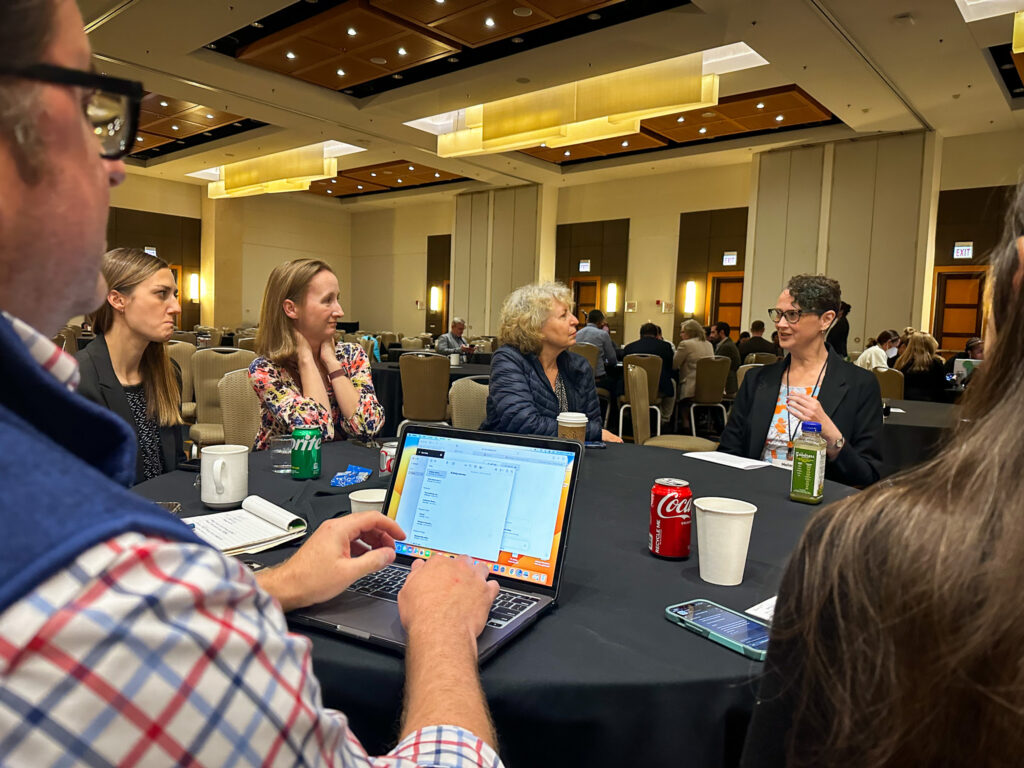


The highlight of the day was our small group breakout sessions focused on real-world use cases, including creating patient education materials, supporting self-paced learning, and accelerating research. Led by our diverse team of physicians, learners, and educators, these stimulating discussions enabled participants to experience ChatGPT’s potential firsthand.
Perspectives Across Generations
Our diverse workshop faculty featured insightful perspectives from educators at all career stages, including OHSU medical student Tomoko Wilson and patient education specialist Melissa Hicks. Tomoko masterfully facilitated the opening word cloud activity that mapped attendees’ interests and she facilitated a breakout session on the use of ChatGPT for self-paced learning, demonstrating her impressive leadership as an emerging physician-educator. Her contributions underscored the importance of learner perspectives in innovating education.
As a medical student, I’m excited yet mindful about AI. This workshop modeled how we can thoughtfully harness emerging tech to empower tomorrow’s learners.
Tomoko Wilson, MD Candidate OHSU
Meanwhile, Melissa lent invaluable insights from the patient education frontier. Her guidance in the hands-on breakout focused on creating patient-centered materials highlighted how tools like ChatGPT can make health education more accessible and effective. Tomoko and Melissa’s impactful involvement emphasized the power of bringing broad viewpoints together to evaluate and integrate exciting new tools like ChatGPT.

Dr. Viji Kurup wrapped up with an important debrief that included the ethical use of AI like ChatGPT in medical education. Dr. Kurup emphasized that “While ChatGPT presents exciting new opportunities, we must critically evaluate how to ethically integrate it into our teaching, including responsible non-disclosure of PHI on these platforms.”
Dr. Larry Chu, our AIM Lab Director, masterfully emceed the workshop, keeping the energy high. In his closing remarks, Dr. Chu noted, “The enthusiastic reception here shows anesthesiology educators’ eagerness to build digital literacy and harness new tools like ChatGPT to prepare future generations.”
Key Takeaways
Participants left equipped not only with practical skills for integrating ChatGPT at their institutions, but also a framework for critically evaluating AI to enhance anesthesiology education while navigating its limitations.
The buzzing excitement filling the room exemplified anesthesiology educators’ appetite to explore emerging technologies like ChatGPT for innovating teaching and learning. Attendees clearly recognized the promise of this new AI tool, while thoughtfully discussing its responsible integration.
The successful reception at this SEA workshop highlighted anesthesiology educators’ commitment to guiding the digital transformation of education. We look forward to seeing how attendees creatively integrate what they’ve learned to bridge artificial and human intelligence, opening new dimensions for preparing learners. The future of anesthesiology teaching and learning is undeniably bright!



